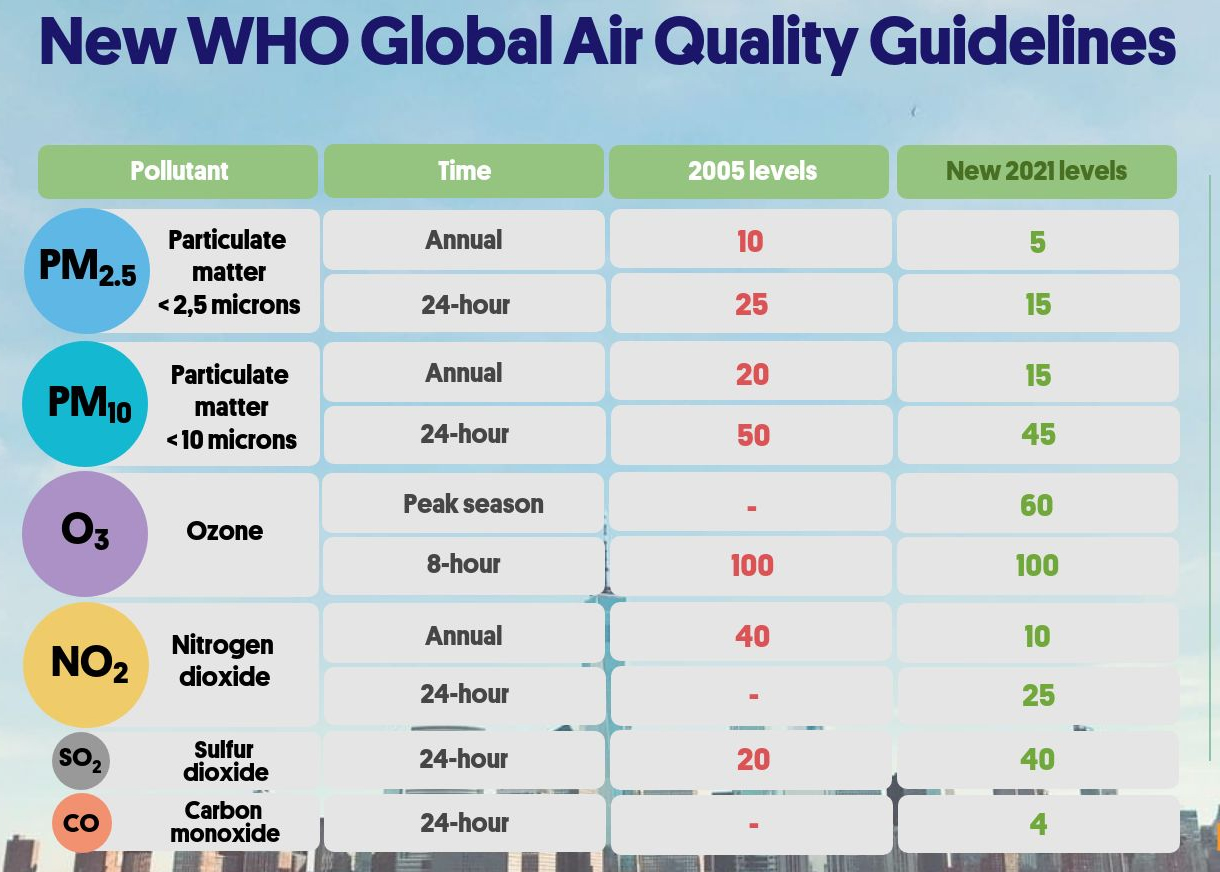Air Quality Database 2022: WHO | 05 Apr 2022
For Prelims: World Health Organisation, WHO’s New Air Quality Guidelines, Particulate Matter.
For Mains: Effects of Air pollution, Environmental Pollution & Degradation.
Why in News?
Ahead of the World Health Day (7th April), the World Health Organisation (WHO) has released Air Quality Database 2022, which shows that Almost the entire global population (99 %) breathes air that exceeds WHO’s air quality limits.
- The WHO for the first time has taken ground measurements of annual mean concentrations of nitrogen dioxide (NO2). It also includes measurements of Particulate Matter with diameters equal or smaller than 10 μm (PM10) or 2.5 μm (PM2.5).
- The findings have prompted WHO to highlight the importance of curbing fossil fuel use and taking other tangible steps to reduce air pollution levels.
- Earlier, in the 2021 World Air Quality Report released by IQAir (a Swiss group), India was home to 11 of the 15 most polluted cities in Central and South Asia in 2021.
What are the Findings?
- Unhealthy Air: More than 6,000 cities in 117 countries are now monitoring air quality but their residents are still breathing unhealthy levels of fine particulate matter and nitrogen dioxide, while people in low and middle-income countries suffer the highest exposure.
- Increased Collection of Data: As many as 2,000 more cities and human settlements are now recording ground monitoring data for particulate matter, PM10 and/or PM2.5, than in the last update (2018).
- This marks an almost sixfold rise in reporting since the database was first made in 2011.
- Impact of Air Pollution: Meanwhile, evidence base for the damage air pollution does to the human body has been growing rapidly and points to significant harm caused by even low levels of many air pollutants.
- Particulate matter, especially PM 2.5, is capable of penetrating deep into the lungs and entering the bloodstream, causing Cardiovascular, Cerebrovascular (stroke) and Respiratory Impacts.
- NO2 is associated with respiratory diseases, particularly asthma, leading to respiratory symptoms (such as coughing, wheezing or difficulty breathing), hospital admissions and visits to emergency rooms.
- Compliance with WHO Air Quality Guidelines: In the 117 countries monitoring air quality, the air in 17% of cities in high-income countries falls below WHO’s air quality guidelines for PM 2.5 or PM 10.
- In low and middle-income countries, air quality in less than 1% of the cities complies with WHO recommended thresholds.
What are the WHO’s New Air Quality Guidelines?
- The 2021 guidelines recommend new air quality levels to protect the health of populations, by reducing levels of key air pollutants, some of which also contribute to climate change.
- By striving to achieve these guideline levels, countries will be both protecting health as well as mitigating global climate change.
- WHO move sets the stage for eventual shifts in policy in the government towards evolving newer stricter standards.
- WHO’s new guidelines recommend air quality levels for 6 pollutants, where evidence has advanced the most on health effects from exposure.
- 6 classical pollutants include particulate matter (PM 2.5 and 10), ozone (O3), nitrogen dioxide (NO2) sulfur dioxide (SO2) and carbon monoxide (CO).
What are the Suggestions to Improve Air Quality and Health?
- Adopt or revise and implement national air quality standards according to the latest WHO Air Quality Guidelines.
- Monitor air quality and identify sources of air pollution.
- Support the transition to exclusive use of clean household energy for cooking, heating and lighting.
- Build safe and affordable public transport systems and pedestrian- and cycle-friendly networks
- Implement stricter vehicle emissions and efficiency standards, and enforce mandatory inspection and maintenance for vehicles.
- Invest in energy-efficient housing and power generation
- Improve industry and municipal waste management
- Reduce agricultural waste incineration, forest fires and certain agro-forestry activities (e.g. charcoal production)
- Include air pollution in curricula for health professionals and providing tools for the health sector to engage.

